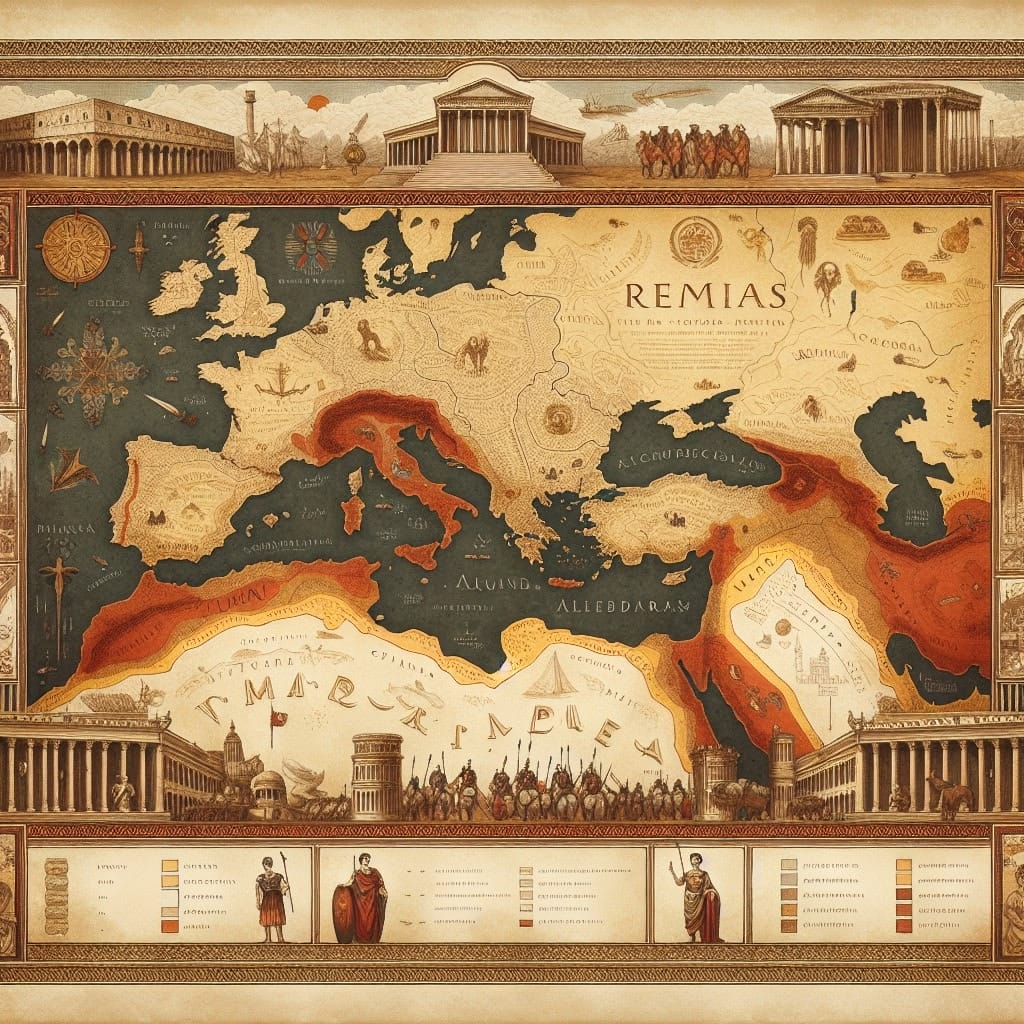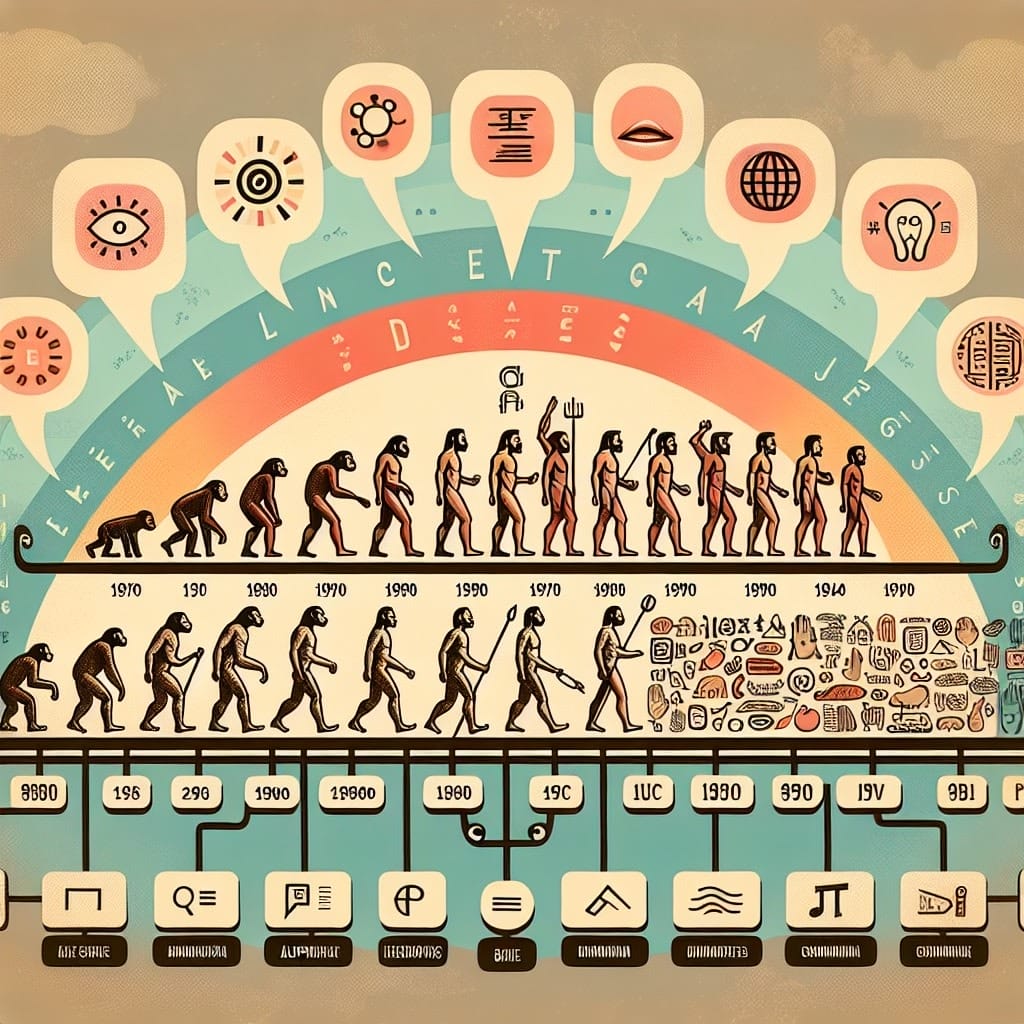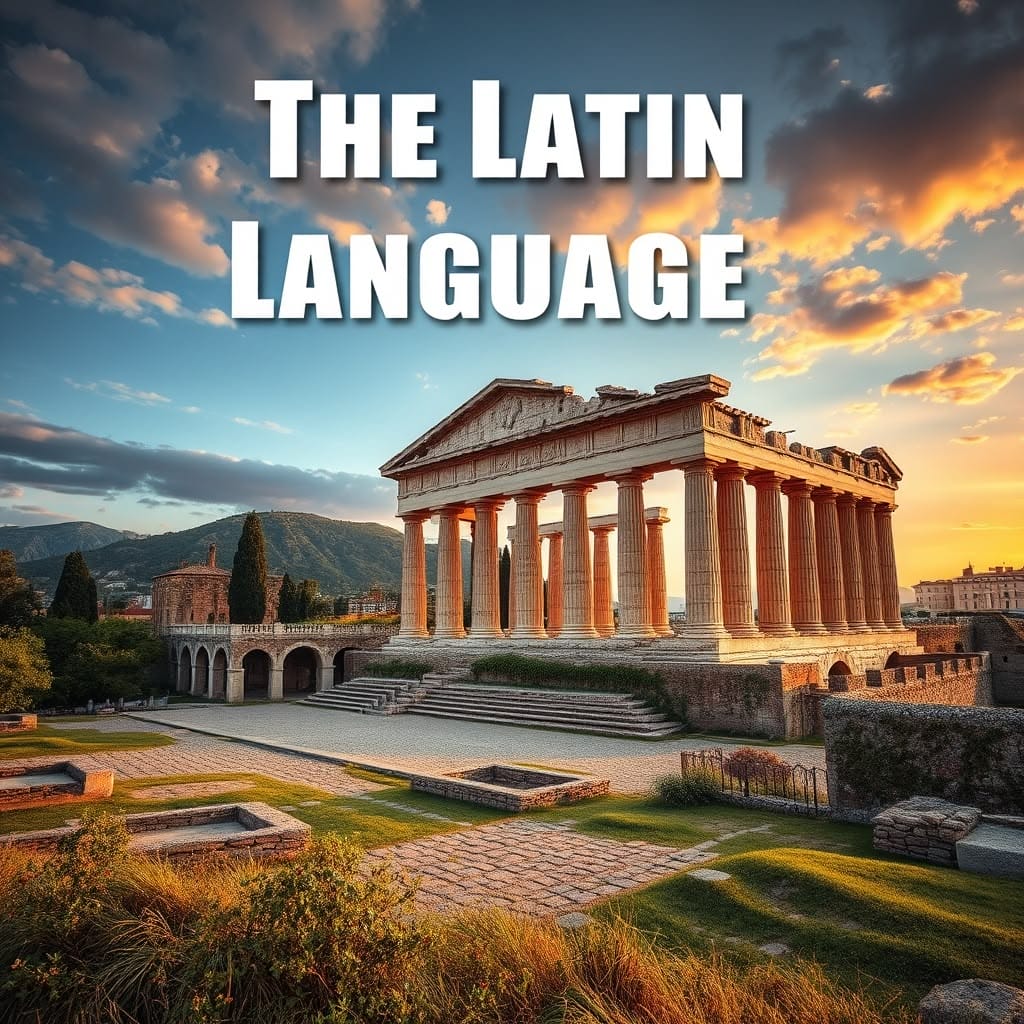Latin, an Indo-European language of the Italic group, has played a pivotal role in shaping the linguistic landscape of Europe and beyond. Originating in the region of Latium, it became the official language of the Roman Republic and Empire, facilitating communication and administration across vast territories.
Despite being considered a “dead language” today, Latin’s influence is far from extinct. It serves as the foundation for modern Romance languages such as French, Spanish, and Italian. Additionally, Latin has infused the English language with numerous root words and expressions.
This article explores the enduring influence of Latin, examining its historical significance and its ongoing impact on contemporary languages, scientific terminology, legal language, and more.
Origins of Latin
Latin, the ancient language of the Roman Empire, originated in the region of Latium, where Rome itself was founded. As the Roman Republic expanded into a vast empire, Latin naturally became a linguistic cornerstone of this burgeoning civilization. It was not merely a means of communication but also a tool of governance, administration, and education.

During Rome’s territorial expansion, Latin spread across Europe and the Mediterranean. This spread was not just a byproduct of conquest but also a significant cultural integration. Roman soldiers, merchants, and colonists introduced Latin to diverse regions, where it often coexisted with local languages. Over time, Latin’s influence deepened, particularly in the western provinces, where it became the foundation for the Romance languages.
Furthermore, the linguistic landscape of the Roman Empire was characterized by multilingualism, with Latin often being used alongside other languages like Greek. This bilingual nature of the empire is a testament to its cultural diversity and the role of Latin as a unifying linguistic force. The map below illustrates the vast expanse of the Roman Empire, highlighting the regions where Latin took root and flourished.
Foundation of Romance Languages
The transition from Latin to Romance languages marks a significant linguistic evolution. As Latin spread across the Roman Empire, it diversified into various dialects, influenced by local languages and cultures. This diversification laid the groundwork for the emergence of Romance languages such as French, Spanish, and Italian.

Central to this evolution was Vulgar Latin, the colloquial form spoken by common people. Unlike its classical counterpart, Vulgar Latin was more dynamic, adapting to regional variations and evolving over time. These changes were especially pronounced during the Medieval period, leading to distinct linguistic features in each region.
| Latin | French | Spanish | Italian |
|---|---|---|---|
| Canis | Chien | Perro | Cane |
| Aqua | Eau | Agua | Acqua |
Thus, Vulgar Latin’s adaptability and influence were pivotal in shaping the linguistic landscape of Europe, giving rise to the Romance languages that continue to thrive today.
Latin and English Vocabulary
The influence of Latin on the English language is both profound and enduring. English, although a Germanic language, has absorbed a significant number of words from Latin, especially through the fields of science, law, and religion. Words such as “audience,” “benevolent,” and “decipher” all originate from Latin roots. This borrowing is partly due to the influence of the Church and scholarly activities during the Medieval period when Latin was the lingua franca of educated Europeans.

Moreover, many common Latin phrases continue to be used in English today. Phrases like “et cetera” (and the rest), “status quo” (the existing state), and “carpe diem” (seize the day) are frequently employed to convey precise meanings. These expressions often remain unchanged in spelling and pronunciation, demonstrating Latin’s persistent role in modern communication.
“Latin’s impact on English is not just historical; it continues to shape the way we articulate complex ideas today,” notes linguist Dr. Emily Harper.
The legacy of Latin, therefore, extends beyond vocabulary, influencing English syntax and stylistic expression, thus cementing its place in the fabric of modern language.
Scientific Terminology and Latin
Latin has played a pivotal role in shaping the language of science. Emerging as the dominant scholarly language during the Roman Empire, Latin facilitated the transition of scientific concepts from Greek to Roman contexts. Its precise grammatical structure and extensive vocabulary made it ideal for articulating complex scientific ideas. This legacy persists today, as many scientific terms are derived from Latin.

In biology and medicine, Latin terminology is ubiquitous. For instance, the suffix “-itis” indicates inflammation, as seen in ‘appendicitis’, while “-oma” refers to tumors, such as ‘carcinoma’. Moreover, chemical terms often use Latin-derived suffixes, like “-ase” for enzymes, including ‘amylase’. Such usage underscores Latin’s enduring clarity and precision.
| Latin Prefix | Meaning |
|---|---|
| Magnis | Large |
| Parvus | Small |
| Dura | Hard |
| Mollis | Soft |
| Caeruleus | Blue |
Latin’s enduring influence in scientific discourse not only reflects its historical significance but also its adaptability in meeting the evolving needs of scientific inquiry.
Latin in Legal Language
Latin remains a cornerstone of legal discourse, offering precision and consistency that are crucial in law. Latin phrases and maxims are deeply embedded in legal documents, reflecting centuries of legal tradition and wisdom. A few common examples include:
- Ex Parte: Actions taken for the benefit of one party without waiting for the other party’s input.
- Habeas Corpus: A legal writ used to determine the validity of a prisoner’s detention.
- Pro Bono Publico: Legal work undertaken voluntarily and without payment for the public good.

These terms, along with others like Amicus Curiae and Certiorari, continue to appear frequently in legal texts and cases, ensuring clarity and uniform understanding across jurisdictions.
“Latin terms provide a precision in legal language that English alone often cannot,” notes Professor James Lawton, a legal expert in jurisprudence.
While Latin enhances the precision of legal writing, it can also pose accessibility challenges, particularly for those unfamiliar with legal jargon. Nevertheless, Latin’s enduring presence in legal documents underscores its role in maintaining tradition and consistency in legal systems worldwide.
Academic Discourse and Latin
Latin holds an esteemed place in the realm of academia, serving as a foundation for scholarly writing and research. Its influence extends across various disciplines, where it ensures precision and facilitates the communication of complex ideas. Latin’s historical significance in academia is undeniable, having been the lingua franca of intellectuals during the Middle Ages and the Renaissance.

In modern scholarly writing, Latin phrases such as et al. (“and others”) and ibid. (“in the same place”) are frequently employed in citations and bibliographies to enhance clarity and consistency. These terms are integral in maintaining the rigor and depth expected in academic discourse. For further insights, consider exploring the enduring role of Latin in legal discourse.
Moreover, many academic institutions continue to uphold Latin traditions. University mottos, such as Harvard University’s Veritas (“Truth”), exemplify Latin’s enduring presence. Latin is also prevalent in ceremonial contexts, such as graduations, where it lends a sense of tradition and solemnity. Understanding these aspects is crucial for appreciating Latin’s impact on modern education, as highlighted in the common Latin phrases used in legal contexts.
Thus, Latin remains a vital component of academic life, bridging historical wisdom with contemporary scholarship. It enriches the language of academia, ensuring that the pursuit of knowledge is both precise and rooted in a rich tradition.
Cultural Impact of Latin
The cultural influence of Latin extends far beyond its linguistic contributions, permeating literature and the arts throughout history. Latin has served as a source of inspiration and a medium for expression in various cultural works. Renowned authors such as Dante Alighieri, in his Divine Comedy, and Geoffrey Chaucer, in The Canterbury Tales, have incorporated Latin phrases and references to enrich their narratives and lend them a sense of gravitas.

In the realm of visual arts, Latin inscriptions have adorned countless masterpieces, from Renaissance paintings to modern sculptures. These inscriptions often convey profound messages, enhancing the viewer’s understanding and appreciation of the artwork.
Beyond literature and art, Latin plays a significant role in shaping cultural identity. It has long been associated with intellectual and scholarly pursuits, symbolizing a connection to the past and a commitment to the continuity of cultural heritage. The use of Latin in mottos, religious liturgy, and ceremonial contexts underscores its enduring presence in cultural identity.
Thus, Latin continues to resonate within our cultural consciousness, serving as a bridge between ancient traditions and modern expressions. This legacy is a testament to its profound and lasting impact on cultural identity. For further exploration of Latin’s role in legal language, consider reading about its legal terms and its enduring relevance.
Modern Communication and Latin
In today’s digital age, Latin finds its place in online communication, serving as a subtle yet potent tool. While not explicitly detailed in studies involving Latin American hospitals’ digital strategies, the use of Latin in digital platforms often signifies authority and trustworthiness, especially in sectors demanding credibility like healthcare. This reflects broader trends where Latin enhances the delivery of reliable information.

Beyond healthcare, Latin’s allure in modern branding is undeniable. Companies across diverse industries, from technology to luxury, leverage Latin to craft brand identities that exude sophistication and timelessness. For instance, brands such as Volvo, Acer, and Asics utilize Latin to evoke a sense of permanence and global resonance. This strategic choice not only distinguishes them in competitive markets but also appeals to a wide audience.
The enduring influence of Latin in digital communication and branding underscores its versatility and continued relevance. As businesses and institutions navigate the digital landscape, Latin remains a powerful asset, enriching the narrative of modern communication.
Latin in Contemporary Education
In the realm of modern education, Latin continues to hold a significant place within curricula, especially in programs that value linguistic and analytical skills. Many schools across Europe and North America still offer Latin as a part of their language courses, recognizing its profound educational value. This ancient language is not only instrumental in understanding the roots of many modern languages but also enhances students’ comprehension of grammar and vocabulary.

The benefits of learning Latin extend beyond linguistic prowess. It fosters critical thinking and precision, skills that are invaluable in various fields of study. Students often find that Latin aids in the mastery of scientific terminology, given its extensive use in biology and medicine. Moreover, understanding Latin can offer insights into historical texts and classical literature, enriching cultural literacy.
As educators seek to prepare students for a globalized world, Latin provides a unique perspective on language development and cultural heritage. Its continued presence in educational institutions underscores its enduring relevance and its capacity to bridge historical knowledge with contemporary applications.
Conclusion: The Enduring Legacy of Latin
Latin’s profound influence is evident across various domains, from its foundational role in the development of Romance languages to its pervasive impact on English vocabulary and scientific terminology. Its presence in academic discourse and legal language underscores its significance in scholarly and professional fields. Moreover, Latin’s resurgence in modern branding highlights its timeless appeal and capacity to convey authority and sophistication.
As we navigate an increasingly digital age, Latin remains relevant, enhancing communication strategies and enriching cultural identity. Its enduring legacy is a testament to its adaptability and enduring power, continuing to shape language and thought in a rapidly evolving world.
Further Reading
For those intrigued by the profound impact of Latin on modern languages, a range of resources can deepen your understanding and appreciation. Books such as “The Latin Language” by Leonard R. Palmer offer a comprehensive look at Latin’s evolution and influence. Similarly, “Vox Latina” by W. Sidney Allen provides insights into the pronunciation and historical context of classical Latin.

For digital resources, LatinTutorial offers video lessons that cater to learners of varying levels, making it an excellent tool for both beginners and advanced students. Additionally, The Cambridge Latin Course website provides interactive exercises and resources that complement formal study.
For those interested in the application of Latin in modern branding, exploring articles like “The Power of Latin in Modern Branding and Naming” can provide valuable insights into how Latin is used strategically today.
These resources collectively offer a blend of historical knowledge and practical application, ensuring a well-rounded exploration of Latin’s lasting legacy.
FAQ on Latin’s Influence
Is Latin still relevant in today’s world? Yes, Latin continues to be relevant, especially in academic, legal, and scientific fields. Its historical significance and foundational role in the development of many modern languages underscore its enduring importance.
How does Latin influence modern branding? Latin is often used in branding due to its association with authority and sophistication. Companies like Volvo and Acer utilize Latin to convey trustworthiness and timelessness, appealing to a global audience.
Why is Latin used in scientific terminology? Latin provides a universal language for scientists, ensuring consistency and precision across diverse linguistic backgrounds. This practice facilitates clear communication in fields like biology and medicine.
Is it true that Latin is a “dead” language? While Latin is not a native language for any community today, it is far from “dead.” It thrives in specific domains such as the Catholic Church, botanical nomenclature, and legal systems, continuing to shape modern discourse.
Should students still learn Latin? Learning Latin can be beneficial as it enhances vocabulary, improves understanding of Romance languages, and develops analytical skills. It also provides insight into Western cultural and intellectual history.

